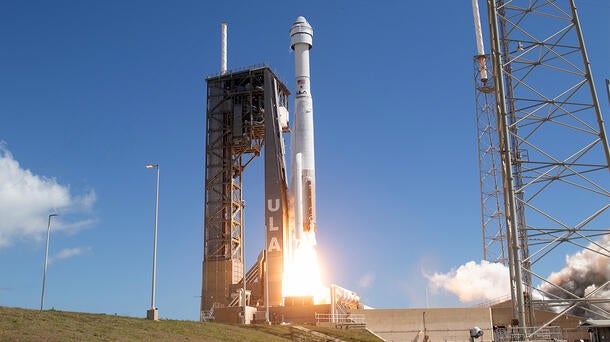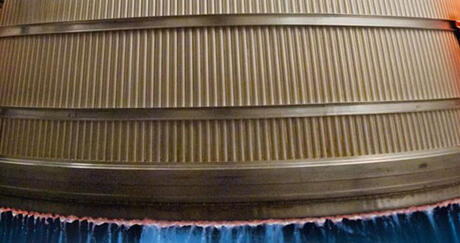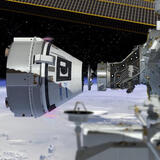The successful launch of Boeing’s crew-carrying Starliner spacecraft aboard a United Launch Alliance (ULA) Atlas V rocket for NASA’s Boeing Crew Flight Test marks the first time an RL10 rocket engine, built by Aerojet Rocketdyne, an L3Harris Technologies company, has been used to launch astronauts into space.
“Launching Starliner on the crewed test flight as part of NASA’s Commercial Crew Program marks an important human spaceflight milestone for our nation,” said Kristin Houston, President of Space Propulsion and Power Systems at Aerojet Rocketdyne. “A similar model of the RL10 engines that helped propel two NASA astronauts on their way to the International Space Station will help send four astronauts to deep space next year on the Artemis II mission aboard NASA’s Space Launch System rocket.”
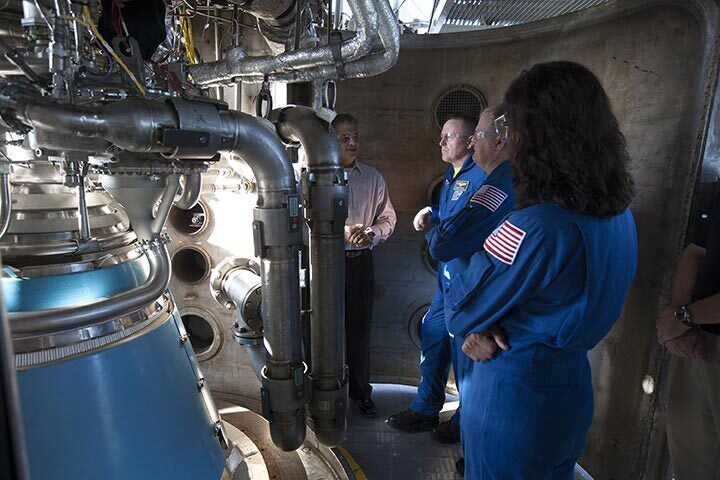
NASA astronauts Eric Boe, from left, Butch Wilmore and Suni Williams listen as United Launch Alliance engineer Tom Harper discusses aspects of an RL10 engine during a tour of Aerojet Rocketdyne's facility in West Palm Beach, Florida. Photo credit: NASA/Dimitri Gerondidakis
The RL10 has been the nation’s premier, high performance upper-stage rocket engine for 60 years, placing numerous military, civil and commercial satellites into Earth’s orbit and sending spacecraft to explore every planet in our solar system. More than 520 RL10 engines have flown in space. The RL10 is fueled by cryogenic liquid hydrogen and liquid oxygen and employs a closed expander cycle that makes it highly efficient and reliable.
“The engine’s demonstrated performance and reliability make it well suited to carry the most precious cargo there is – human beings – as we saw during this mission and will see next year with Artemis II, the second launch of SLS,” added Houston. “Artemis II will send astronauts deeper into space than any humans since Apollo.”
The human spaceflight chapter of the RL10’s rich history began as ULA’s Atlas V launched from Space Launch Complex 41 at Cape Canaveral Space Force Station in Florida. Following the boost phase of the flight, twin RL10 engines on the launch vehicle’s Centaur upper stage, each generating 22,300 pounds of thrust, ignited to send Starliner and its two-person crew on the way to the International Space Station.
“It’s not often that a program that has been in production for more than six decades has an opportunity to mark a new milestone,” Houston continued. “It is exciting to see the human spaceflight chapter of the RL10 engine begin.”
SLS for Artemis II features ULA’s Interim Cryogenic Propulsion Stage (ICPS) with a single RL10, but future versions, beginning with Artemis IV, will use the more powerful Exploration Upper Stage (EUS) powered by four RL10 engines. The EUS will give the rocket extra lifting power, roughly three times the lifting capability of current commercial launch vehicles.
The RL10 was one of several Aerojet Rocketdyne propulsion systems that helped make Starliner’s first launch with astronauts a success.
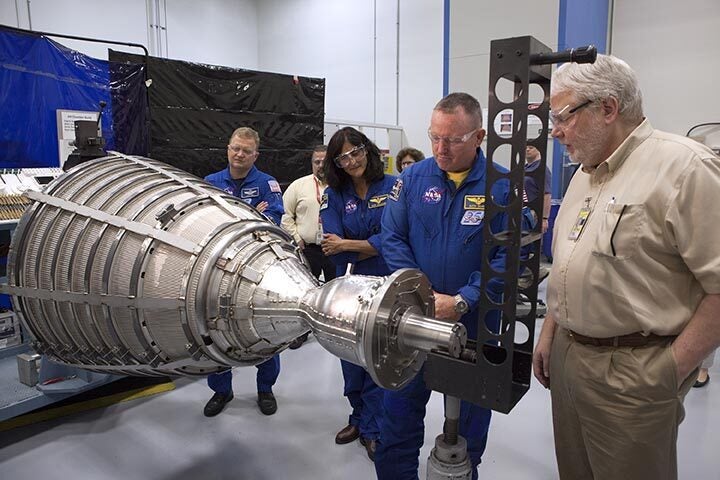
NASA astronauts Butch Wilmore, Eric Boe and Suni Williams surveys an RL10 engine as it stands in a vacuum chamber at Aerojet Rocketdyne's test stand in West Palm Beach, Florida. Two RL10 engines propel the Centaur upper stage during United Launch Alliance’s Atlas V mission to launch Boeing's CST-100 Starliner on a flight test carrying a crew. Photo credit: NASA/Dimitri Gerondidakis
Two Aerojet Rocketdyne AJ-60A solid rocket boosters, each standing 67 feet tall and generating more than 375,000 pounds of thrust, gave the Atlas V an extra boost during liftoff. This was the final mission for the monolithic, filament-wound booster, which was developed specifically for the Atlas V and has flown more than 100 times since 2003.
The vehicle’s Centaur upper stage is equipped with smaller Aerojet Rocketdyne thrusters used for propellant settling, as well as pressurized tanks that support operation of the launch vehicle.
Additionally, L3Harris provided flight-critical avionics to the Centaur and Atlas V core stage, enabling a successful launch and continued flight to the International Space Station. Specifically designed and qualified for use on launch vehicles and spacecraft, L3Harris’ highly-reliable suite of avionics includes communications, range safety receivers, power distribution and control, data acquisition, flight computers and navigation.
The Starliner spacecraft is now making its way to the International Space Station with NASA astronauts Barry Wilmore and Suni Williams.
